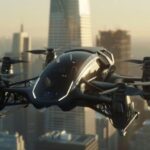You must have heard that a man committing suicide due to some reason, but have you ever heard that robot committing suicide due to heavy workload?
Today I will share a mysterious case of robot who suicide due to workload, leaving many questions and wonders about the robots that how to treat them in workplace? What is the future of these AI robots and will humans become totally dependent on these AI robots? This is the nationwide debate on robot integration and workload.
But my question is that, the main purpose of building robots is to perform heavy work, so how can they malfunction or experience technical issues due to heavy workloads if their algorithms are designed to handle it?
So, lets go towards this puzzling case!
When and where the incident take place:
This incident was take place on 27 June 2024 in the city of south Korea called Gumi. The robot is known as “robot supervisor”. Before shattering down the robot was circling on one point, it seems like something unusual that is happening in it. After behaving strange the robot fall down from 2-meter high staircase with in council building.
Background of the robot:
The robot was not just a mere machine but it was a valuable civil servant with its own ID card, employed since August 2023 . This robot is manufactured by Bear Robotics, a California-based company known for its restaurant service robots. Its duties included delivering documents, promoting the city, and providing information to residents. The robot worked regular office hours, from 9 am to 6 pm.
Possible Causes and Reactions:
The exact reason behind robot falling and shattering remains unclear. One major cause is that the robot’s fall may have been triggered by overwork or technical malfunction, raising concerns about the pressures faced by robots in service roles. The incident underscores the need for robust safeguards and monitoring mechanisms to ensure the well-being of robotic counterparts in workplace settings.
Broader Implications:
South Korea is known for its high density of robots, with one industrial robot for every ten employees. This incident, therefore, carries significant weight in the ongoing discourse about the future of robotics and automation in daily life and work. It serves as a reminder that even highly advanced systems can experience critical failures, and the human-robot relationship must be managed with care and consideration.
Conclusion:
This case is wake up call for the robot creators that despite advance algorithms used in robots it can malfunction or a technical issue can occur in robot and this incident will also effect the future of manufacturing robot technologies because we are moving toward future with increasing automation and we are also dependent on these tools and AI. This was a strange incident leaving many questions and a sense of how to treat robots in workplace.

















